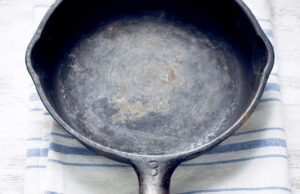As an Amazon Associate, I earn from qualifying purchases at no extra cost to you.
How to Clean Dishwasher Drain Hose Without Removing It
Dishwashers can be lifesavers, but have you noticed water sometimes drains slowly or smells funny? I had this happen last week and it was surprisingly gross. Turns out, the drain hose can get clogged with bits of food, grease, or soap buildup. The tricky part is cleaning it without pulling it out. In this article, I’ll show exactly how to tackle this problem safely and effectively.
Flush the hose with hot water to loosen debris. Use a flexible brush or pipe cleaner to gently scrub inside. Pour a mixture of baking soda and vinegar to break down buildup. Run the dishwasher on a short hot cycle to rinse everything out. Repeat the flushing if water is still slow. Check for kinks or twists in the hose to improve flow. Wipe the outside of the hose for extra cleanliness. Maintain monthly cleaning to prevent clogs.
Inspect the Drain Hose Carefully
Before touching anything, take a good look at your dishwasher’s drain hose. Sometimes a simple visual check can reveal obvious kinks or blockages. I once ignored a small twist, and the water kept backing up. Notice where the hose bends, usually under the sink or behind the dishwasher. Bends often trap food particles, so it’s worth observing carefully.
Next, run a quick water test. Fill a cup and pour it into the dishwasher’s drain opening. Watch how fast it flows. Slow flow hints at buildup somewhere inside the hose. You can gently squeeze the hose along its length to feel for soft spots or clogs. Think of it like checking a garden hose for dirt or lumps.
After inspecting, clear any loose debris near the openings. Sometimes tiny food pieces are stuck at the ends. A paper towel or small rag can grab these easily. Remember, even a little blockage can reduce efficiency. Doing this first step makes the next cleaning stages much smoother.
Lastly, make a mental note of the hose length and layout. Knowing where twists or tight bends are helps when you use tools inside. You’ll thank yourself later when flushing or brushing becomes easier. Taking a few minutes here saves frustration later.
- Look for kinks or bends
- Test water flow
- Squeeze hose to check for soft spots
- Remove visible debris
Flush with Hot Water
Flushing with hot water is simple but powerful. Start by boiling a kettle or using hot tap water. Pour it slowly into the drain opening of your dishwasher. The heat helps loosen grease and soap gunk that might be stuck inside. I did this once, and the water started flowing much faster immediately.
For best results, pour in stages. Don’t dump all at once, let it soak a little, and repeat. Imagine giving the hose a gentle massage with hot water. This method is safer than harsh chemicals and keeps the hose intact. Sometimes just a few rounds of hot water can remove most of the grime.
If you notice water still moves slowly, try lifting or slightly twisting the hose while pouring. This helps dislodge stubborn particles without taking it off. I often do this while thinking, “Why didn’t I check this sooner?” It’s one of those surprisingly easy tricks that works.
Finally, after flushing, check the drainage again. Run a short dishwasher cycle with hot water to see if flow improves. If it’s still slow, move to a more thorough cleaning method next. Flushing alone works often, but sometimes you need extra steps.
- Use boiling or very hot water
- Pour slowly and in stages
- Twist hose gently while pouring
- Test flow after flushing
Use Baking Soda and Vinegar
Baking soda and vinegar is a classic cleaning combo. I always keep some handy for the dishwasher. Start by pouring a cup of baking soda into the drain hose opening. Follow it with a cup of white vinegar. You’ll see fizzing, which is normal and breaks down grease and soap buildup.
Let the mixture sit for 10–15 minutes. During this time, it loosens grime without touching the hose. I usually watch the fizz and feel satisfied thinking, “Wow, this is working.” Afterward, flush again with hot water to rinse everything. You may notice water flowing smoother right away.
Sometimes stubborn clogs need a second round. That’s okay—just repeat the process. You can also combine this with gentle twisting of the hose. It’s like giving your hose a mini spa treatment. Small actions make a big difference over time.
After rinsing, smell check is important. If it still smells slightly musty, run a hot dishwasher cycle with just water. That final rinse usually removes lingering vinegar or debris. You’ll end up with a fresh, clean hose without removing it at all.
- Pour baking soda, then vinegar
- Let fizz for 10–15 minutes
- Flush with hot water
- Repeat if needed
Scrub with a Flexible Brush
A flexible brush works wonders for hidden buildup. I keep one just for my kitchen drains. Carefully insert it into the hose and twist gently. You don’t want to force it too hard, or you risk damaging the hose. Think of it like cleaning a reusable straw—you want it thorough but gentle.
Move the brush in and out slowly. Each rotation scrapes off grime that hot water couldn’t remove. I often imagine the food debris sliding away, which makes it oddly satisfying. If the brush has bristles, it helps loosen gunk in tight bends or corners. Small tips like this make cleaning less frustrating.
After brushing, flush again with hot water to wash out loosened debris. You can combine brushing with vinegar and baking soda for extra cleaning power. Sometimes I even see little bits of food finally making their way out, which feels like a small victory.
Finally, wipe the outside of the hose with a damp cloth. It removes any spilled gunk and keeps things tidy. While not essential, this step gives your kitchen a cleaner, fresher feeling overall.
- Use a flexible brush gently
- Twist and move slowly
- Flush afterward
- Wipe outside for neatness
Maintain Monthly Cleaning
Maintenance is key to preventing clogs. I mark my calendar to clean the hose every month. Even a quick flush with hot water keeps buildup minimal. Consistency makes cleaning easy and avoids future headaches.
During maintenance, check for kinks or twists. Straightening the hose slightly improves drainage. I sometimes notice tiny bits of food caught even after flushing, which is easier to remove monthly than when fully clogged. Think of it like trimming hair instead of waiting for a bad haircut.
Also, run a short empty dishwasher cycle with hot water monthly. This helps rinse the hose internally and keeps smells away. I enjoy seeing how much smoother the water drains afterward. It’s a small habit that prevents big problems.
Lastly, keep a small brush and baking soda handy. A quick scrub or rinse becomes second nature. I often do it while thinking about other chores—it barely takes extra time but pays off. Regular maintenance is the secret to a hassle-free dishwasher.
- Clean monthly
- Check for twists
- Run hot empty cycle
- Keep cleaning tools handy
Check for Kinks and Reposition
Even a clean hose can drain poorly if it’s kinked. I once spent hours cleaning mine, only to find a small twist blocking water. Repositioning the hose can solve drainage issues instantly. Look under the sink and behind the dishwasher for tight bends.
If you find a kink, gently lift or straighten the hose. Avoid sharp bends, which trap debris and slow flow. Sometimes I imagine the hose as a lazy river—if it twists too much, the water gets stuck. Simple repositioning makes a surprising difference.
Ensure the hose has a slight slope toward the drain. Gravity helps water flow without backup. I often test by pouring a little water in and watching it drain. If it pools or backs up, adjust the angle. Little tweaks like this prevent clogs without extra tools or chemicals.
After adjusting, run a test dishwasher cycle. You’ll notice faster drainage and no lingering odors. It’s satisfying to see a simple change solve what seemed like a stubborn problem. Even minor hose positioning matters a lot.
- Look for kinks or tight bends
- Straighten gently
- Ensure proper slope
- Test with water
Final Thoughts
Cleaning your dishwasher drain hose without removing it is easier than it sounds. Hot water, baking soda, vinegar, and a flexible brush work wonders together. Small inspections, gentle scrubbing, and monthly maintenance prevent slow drainage and odors. Even minor adjustments to hose positioning make a big difference. With these tips, your dishwasher will run smoothly, smell fresh, and save you from stressful clogs.
| Task | Recommended Tool | Tip/Extra Info |
|---|---|---|
| Inspect hose | Hands, flashlight | Look for kinks and twists |
| Flush hose | Hot water | Pour slowly in stages |
| Baking soda & vinegar | Cup/measuring | Let fizz 10–15 minutes |
| Brush hose | Flexible pipe brush | Twist gently, don’t force |
| Monthly maintenance | Calendar reminder | Flush or scrub once a month |
| Reposition hose | Hands | Keep slight downward slope |
| Test drainage | Cup of water | Check flow before closing dishwasher |
| Wipe exterior | Damp cloth | Keeps area clean and fresh |
Frequently Asked Questions (FAQs)
Is it safe to use hot water for cleaning the drain hose?
Yes, using hot water is safe and effective for most dishwasher hoses. It helps loosen grease, soap, and food particles that may be stuck. Pouring in stages is recommended to avoid sudden pressure. Hot water alone can often remove minor clogs without chemicals. For stubborn buildup, combining with baking soda and vinegar improves results. I usually boil water or use very hot tap water, then flush slowly while occasionally twisting the hose. This method is gentle on the hose material, keeps connections intact, and ensures smoother drainage.
Can I use chemicals to clean the dishwasher drain hose?
While some chemical cleaners work, they can be harsh on hoses and fittings. Vinegar and baking soda are safer, eco-friendly alternatives. Chemicals may damage rubber or plastic over time, causing leaks. I prefer natural cleaning first, then mild chemical options only if necessary. Always read the label and follow instructions, and avoid mixing chemicals. Sometimes mechanical cleaning with a flexible brush combined with natural solutions is enough. Think of it like cleaning a coffee pot gently—you get results without unnecessary damage.
Do I need to remove the dishwasher drain hose to clean it?
No, you don’t have to remove the hose. Flushing with hot water, using a brush, and applying baking soda and vinegar can clean it effectively. Removing it is only necessary for extreme blockages or replacement. I’ve cleaned mine multiple times without removal, which saves time and avoids unnecessary disconnections. Regular maintenance keeps the hose clear. This method works well for everyday clogs and prevents future drainage problems, keeping your dishwasher running smoothly.
Is it necessary to maintain the hose monthly?
Yes, monthly maintenance prevents buildup before it becomes a major clog. Even a quick flush with hot water or light brushing is effective. I keep a reminder on my phone and notice better drainage and fewer odors. Small, consistent efforts prevent time-consuming cleaning later. Monthly maintenance is like brushing your teeth—short but essential. Over time, it keeps your dishwasher efficient and your kitchen fresh.
Can small kinks in the hose affect drainage?
Absolutely. Even minor twists or bends slow down water flow and trap debris. I once spent hours cleaning only to find a small kink blocking water. Straightening the hose and ensuring a slight downward slope often solves drainage issues instantly. Gravity helps water flow naturally. Check periodically to prevent clogs, and simple adjustments can make a huge difference without any extra cleaning.
Do I need a special brush for the drain hose?
A flexible pipe or drain brush works best, but anything long, thin, and soft can help. I use one designed for pipes, which fits the hose curves well. Avoid stiff brushes that could damage the hose. Brushing loosens debris that water alone might not remove. Gentle twisting while brushing gives surprisingly good results. Even a small brush makes maintenance faster and more effective.
Is vinegar really effective for dissolving buildup?
Yes, vinegar is acidic enough to break down grease and soap buildup. Combined with baking soda, it creates fizzing that loosens grime inside the hose. I often pour a cup of each and let it sit for 10–15 minutes before flushing. It’s eco-friendly, safe, and usually strong enough for common dishwasher clogs. Vinegar also helps eliminate odors. Using it regularly keeps the hose clean and water flowing freely.
Can I prevent future clogs entirely?
While nothing stops all clogs, regular maintenance reduces them significantly. Flushing with hot water, monthly brushing, and checking hose position help a lot. I also scrape food from dishes before loading and avoid pouring grease down the sink. These habits prevent buildup inside the hose. Combined with occasional vinegar cleaning, your dishwasher stays efficient. Prevention is easier than fixing a fully clogged hose.




